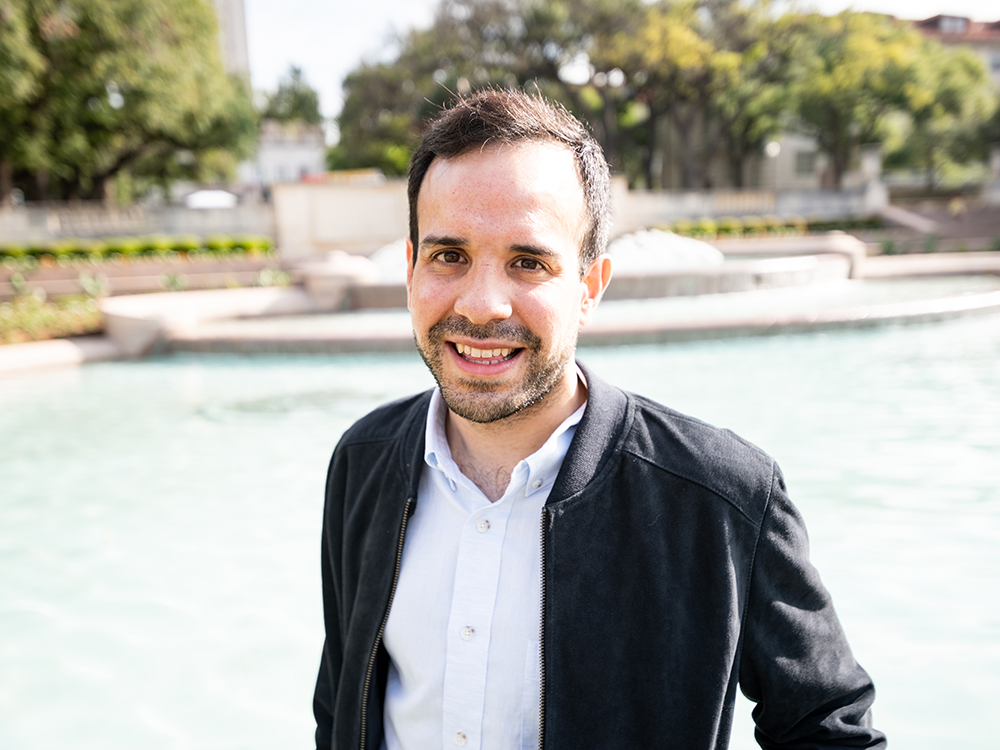Back to Faculty Directory

gesanoja@che.utexas.edu
512-471-5238
Office Location: EER 5.618
Gabriel Sanoja Lopez
Assistant Professor
Jim and Barbara Miller Endowed Faculty Fellowship in Chemical Engineering
Research Presentation for Prospective Graduate Students
Educational Qualifications
Ph.D., Chemical Engineering, University of California, Berkeley (2016)
B.S., Chemical Engineering, Massachusetts Institute of Technology (2012)
Courses Taught
CHE 319 Transport Phenomena
Focus
Engineering mechanical properties and lifetime of soft polymeric materials
Research
The pressing need to develop a sustainable society with an improved quality of life requires important contributions from polymer science. Beyond the concerted efforts of the private and public sectors to promote existing technologies, fundamental science remains essential to generate major breakthroughs. Synthetic polymers revolutionized the 20th century replacing structural materials such as metal, wood, and glass in a myriad of applications, yet it is still challenging to rationally engineer numerous mechanical properties based on their molecular structure.
Soft materials based on 3-D polymer networks are critical for engineering and biomedical applications due to their ability to deform elastically and extensively prior failure. From a fundamental standpoint, their structure-mechanics relations remain elusive, particularly at large deformations, because the individual polymer chains have limited extensibility and break during elongation. These scission events play a key role in the redistribution of stress among the undamaged polymer chains, and in the macroscopic fracture toughness. While decades of research have focused on the effect of molecular parameters such as the crosslink density, and filler concentration on the bulk elasticity, mechanical strength, and fracture toughness; the rational design of polymer networks remains largely empirical due to the inability to detect and quantify damage upon deformation. We are particularly interested in designing polymer networks tagged with damage-activated probes to fundamentally understand changes in network structure upon deformation.
The goals of our research are to illustrate a comprehensive multi-scale picture of the fracture mechanisms of soft and tough materials (e.g., elastomers and hydrogels) by quantifying global and local stress, strain, and damage fields. This information serves to develop multi-scale physical models that quantitatively relate the molecular and microscopic structure of soft materials to their bulk mechanical properties.
Awards
- Outstanding Graduate Student Instructor Award for Transport Processes, 2015
- Gold Button – Highest Academic Honor from the Venezuelan Association of Chemistry Olympiads, 2007
- Silver Medal on the 12th Iberoamerican Chemistry Olympiad, 2007
- Bronze Medal on the 39th International Chemistry Olympiad, 2007
- Bronze Medal on the 11th Iberoamerican Chemistry Olympiad, 2006
Selected Publications
- B. C. Popere, G. E. Sanoja et al., Photocrosslinking polymeric ionic liquids via anthracene cycloaddition for organic electronics. Journal of Materials Chemistry C. 6, 8762–8769 (2018).
- N. S. Schauser, G. E. Sanoja et al., Decoupling Bulk Mechanics and Mono- and Multivalent Ion Transport in Polymers Based on Metal-Ligand Coordination. Chemistry of Materials. 30, 5759–5769 (2018).
- G. E. Sanoja, N. S. Schauser et al. Ion Transport in Dynamic Polymer Networks Based on Metal-Ligand Coordination: Effect of Cross-Linker Concentration. Macromolecules. 51, 2017–2026 (2018).
- J. Bartels, G. E. Sanoja et al., Decoupling Mechanical and Conductive Dynamics of Polymeric Ionic Liquids via Trivalent Anion Additive. Macromolecules. 50, 8979-8987 (2017).






